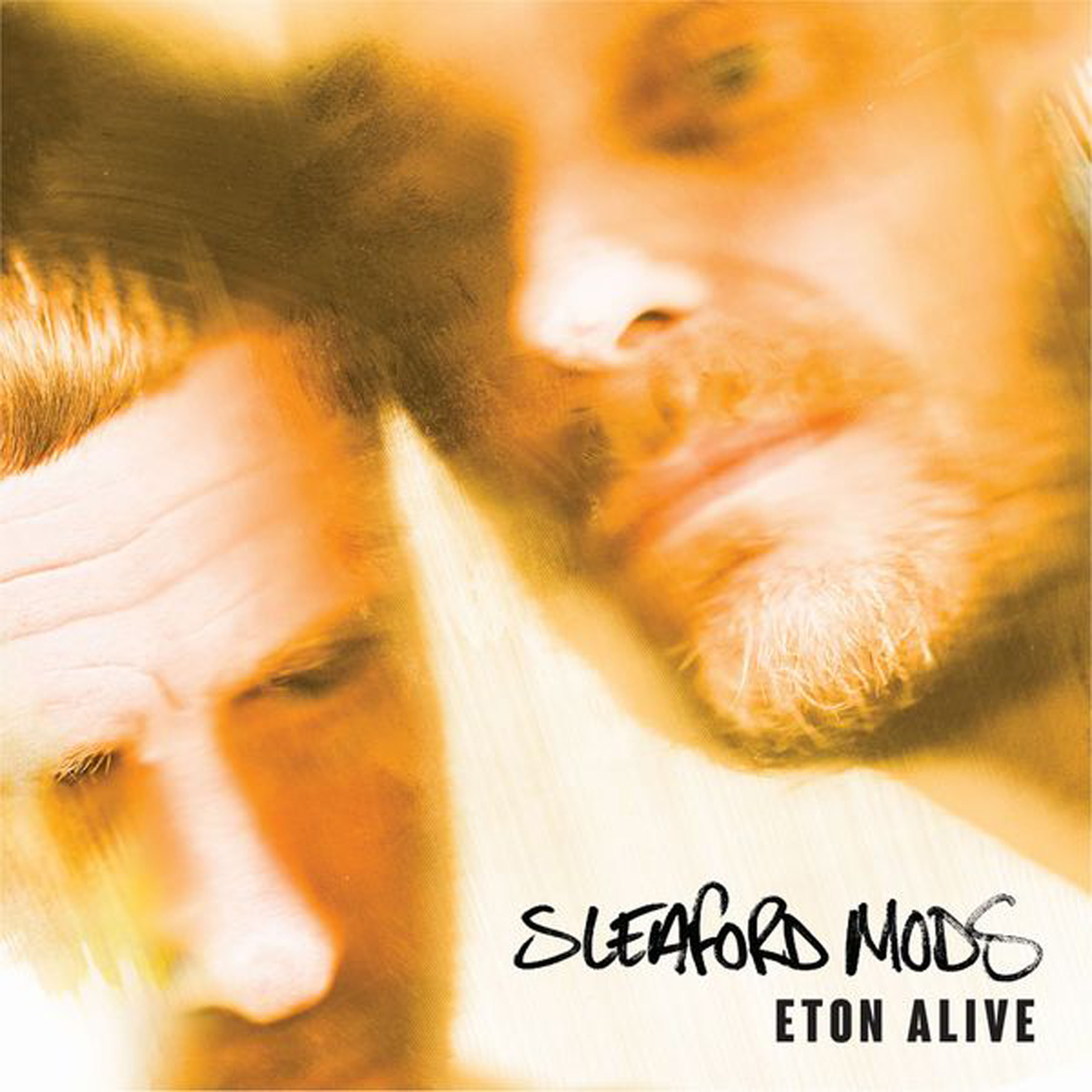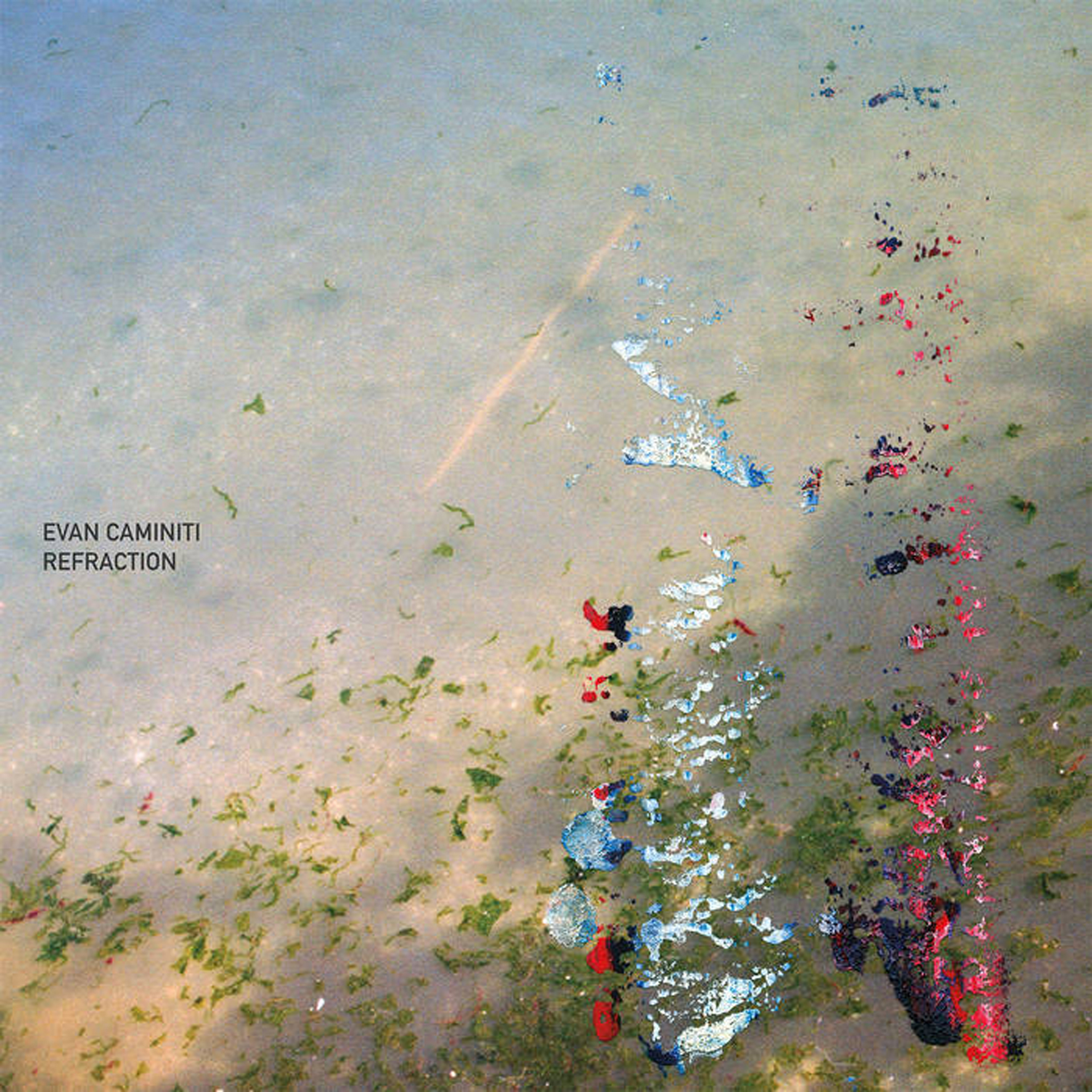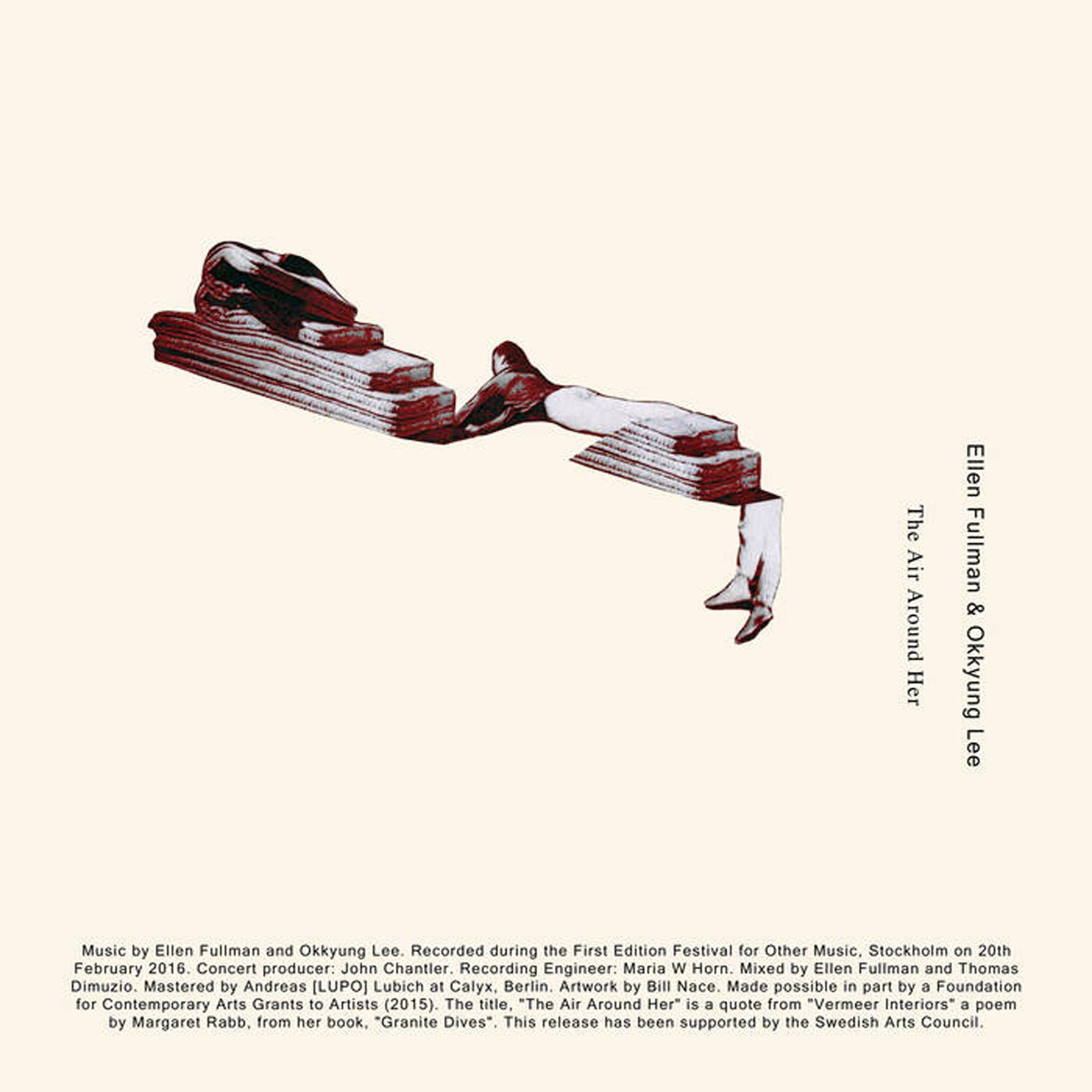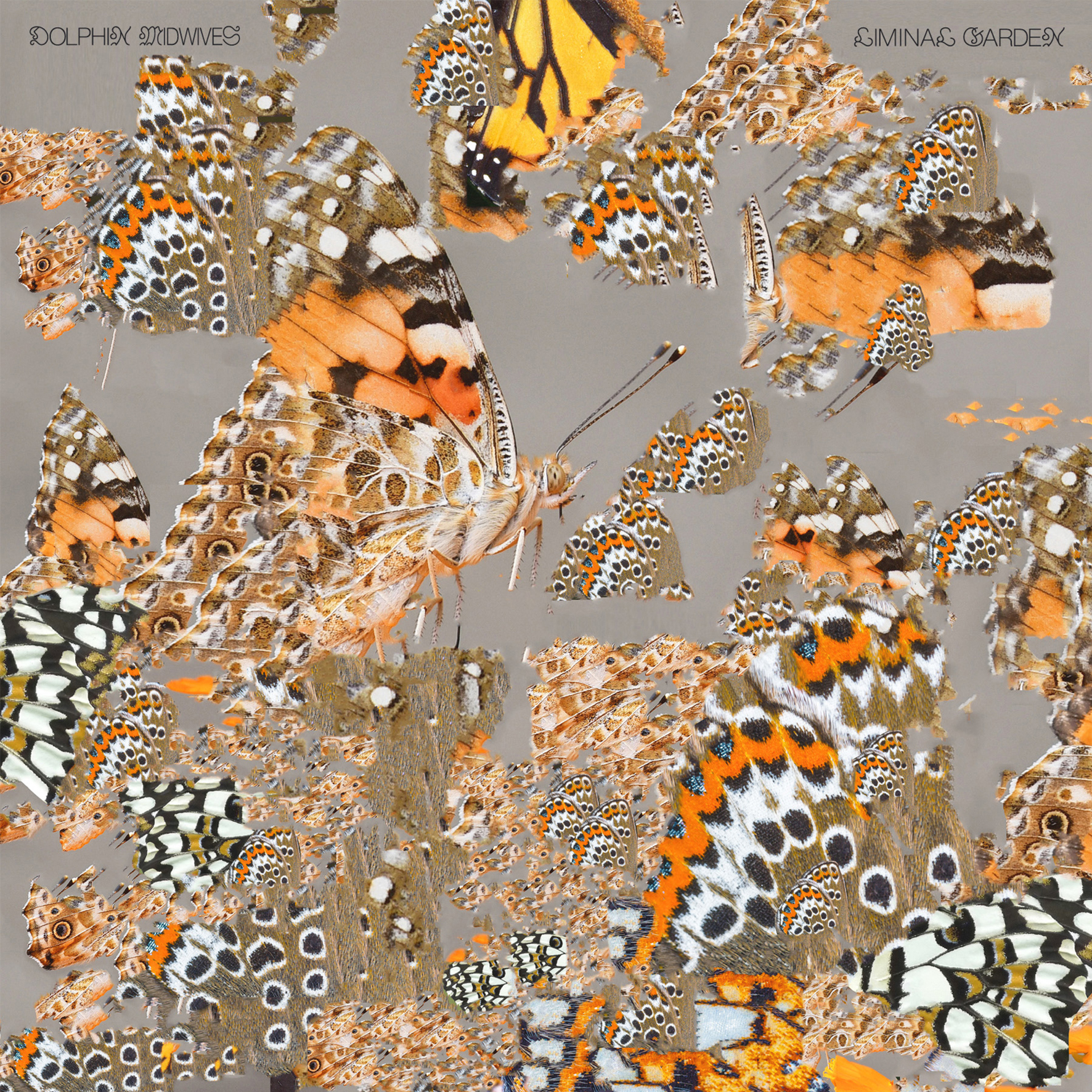 This prolific Nottingham-based duo are back with their fifth formal full-length and the first to be released on their own Extreme Eating imprint. Unsurprisingly, Eton Alive does not tamper much with the band’s signature backdrop of spare, simple grooves and Jason Williamson has no shortage of fresh topics that displease him. That consistency is a huge part of Sleaford Mods' charm though (along with Andrew Fearn’s eternally deadpan, head-bobbing presence, of course): sometimes the grooves are quite good and sometimes they are not, but they exist primarily as a platform for Williamson to unleash his vitriolic, heavily accented, and sometimes blackly funny stream-of-consciousness critiques of everything that rankles his sensibilities. Given the pair's continued hyper-constrained aesthetic and one-note approach to mood and melody, Eton Alive is a characteristically hit-or-miss affair, as everything depends the inspiration or impenetrability Williamson’s wordplay and how it fits with Fearn’s minimal, repetitive beats. That is to be expected though. During its strongest moments like "Top It Up," Eton Alive can be quite a bracing and invigorating reminder that Sleaford Mods are a singular bastion of integrity and spirited, free-floating hostility in a world that desperately needs both.
This prolific Nottingham-based duo are back with their fifth formal full-length and the first to be released on their own Extreme Eating imprint. Unsurprisingly, Eton Alive does not tamper much with the band’s signature backdrop of spare, simple grooves and Jason Williamson has no shortage of fresh topics that displease him. That consistency is a huge part of Sleaford Mods' charm though (along with Andrew Fearn’s eternally deadpan, head-bobbing presence, of course): sometimes the grooves are quite good and sometimes they are not, but they exist primarily as a platform for Williamson to unleash his vitriolic, heavily accented, and sometimes blackly funny stream-of-consciousness critiques of everything that rankles his sensibilities. Given the pair's continued hyper-constrained aesthetic and one-note approach to mood and melody, Eton Alive is a characteristically hit-or-miss affair, as everything depends the inspiration or impenetrability Williamson’s wordplay and how it fits with Fearn’s minimal, repetitive beats. That is to be expected though. During its strongest moments like "Top It Up," Eton Alive can be quite a bracing and invigorating reminder that Sleaford Mods are a singular bastion of integrity and spirited, free-floating hostility in a world that desperately needs both.
Three new episodes for your listening enjoyment. After two weeks off, we are back with three brand new episodes: three hours / 36 tunes. Episode 697 features music from Beak>, Brothertiger, Kate Carr, Gnod, Taylor Deupree, FIN, Church Andrews & Matt Davies, Ortrotasce, Bill MacKay, Celer, Kaboom Karavan, and Ida. Episode 698 boasts a lineup of tracks from Susanna, Nonpareils, KMRU, A Place To Bury Strangers, final, Coti K., Dalton Alexander, Akio Suzuki, The Shadow Ring, Filther, Aaron Dilloway, and Ghost Dubs. Episode 699 is bursting at the seams with jams from Crash Course In Science, Chrystabell and David Lynch, Machinedrum, Ekin Fil, Finlay Shakespeare, Actress, Mercury Rev, Dave Brown / Jason Kahn, øjeRum, d'Eon, Jeremy Gignoux, and Shellac. Mountain photo taken in Japan by Chris. Get involved: subscribe, review, rate, share with your friends, send images! |



 This latest EP is a companion piece of sorts to Caminiti's 2017 Toxic City album, albeit one that draws its inspiration from NYC's hidden oases of calm and space rather than its more claustrophobic and dystopian elements. Much like its predecessor, Refraction continues to explore Caminiti's deep interest in dub techno, yet he has stretched the boundaries of the form in an intriguing, thoughtful, and almost quixotic way: with these four pieces, he attempts to replace the rhythm of the dancefloor with a more languorous and organic pulse ("like a circulatory system made audible"). With casual and relatively inattentive listening, these experiments feel kind of like a classic Basic Channel or Mille Plateaux release that has been deconstructed and stretched into something vaporous and drifting rather than pulsing, but the depth and quiet beauty of Caminiti's unconventional vision comes into vivid focus when Refraction is experienced through headphones.
This latest EP is a companion piece of sorts to Caminiti's 2017 Toxic City album, albeit one that draws its inspiration from NYC's hidden oases of calm and space rather than its more claustrophobic and dystopian elements. Much like its predecessor, Refraction continues to explore Caminiti's deep interest in dub techno, yet he has stretched the boundaries of the form in an intriguing, thoughtful, and almost quixotic way: with these four pieces, he attempts to replace the rhythm of the dancefloor with a more languorous and organic pulse ("like a circulatory system made audible"). With casual and relatively inattentive listening, these experiments feel kind of like a classic Basic Channel or Mille Plateaux release that has been deconstructed and stretched into something vaporous and drifting rather than pulsing, but the depth and quiet beauty of Caminiti's unconventional vision comes into vivid focus when Refraction is experienced through headphones. Sebastian Banaszczyk's sound recycling project Bionulor's recent works have been part of larger multimedia projects such as theater, but for A. S., he has returned to a purely audio format. He maintains a thematic unity to the album, however, making it as conceptual as any of his prior works. For this one, his starting point was the work of Russian composer Alexander Scriabin. Banaszczyk strikes that perfect balance between creating something new while allowing the source material to be recognizable throughout.
Sebastian Banaszczyk's sound recycling project Bionulor's recent works have been part of larger multimedia projects such as theater, but for A. S., he has returned to a purely audio format. He maintains a thematic unity to the album, however, making it as conceptual as any of his prior works. For this one, his starting point was the work of Russian composer Alexander Scriabin. Banaszczyk strikes that perfect balance between creating something new while allowing the source material to be recognizable throughout. Mark Solotroff’s contributions to harsh electronic music cannot be overstated. Beginning with the adult bookstore sleaze of the 1980s power electronics project Intrinsic Action into the present day psychologically disturbing noise of Bloodyminded (which, in a live context, becomes the perfect deconstruction of rock performance) and the doom metal tinged Anatomy of Habit, he has been an influential force for the past 35 years. This does not even take into account his multitude of solo and side projects, such as these two recent cassettes. All of his work is joined together by a single, distinct thread: a love of analog synthesizers that borders on the obsessive. Here those synths are used to create the perfect soundtrack to city isolation.
Mark Solotroff’s contributions to harsh electronic music cannot be overstated. Beginning with the adult bookstore sleaze of the 1980s power electronics project Intrinsic Action into the present day psychologically disturbing noise of Bloodyminded (which, in a live context, becomes the perfect deconstruction of rock performance) and the doom metal tinged Anatomy of Habit, he has been an influential force for the past 35 years. This does not even take into account his multitude of solo and side projects, such as these two recent cassettes. All of his work is joined together by a single, distinct thread: a love of analog synthesizers that borders on the obsessive. Here those synths are used to create the perfect soundtrack to city isolation. As Ellen Fullman can likely attest, one of the downsides to inventing your own instrument with 100-foot-long strings is that it definitely limits the number of possible venues for your performances. Another is that Fullman's Long String Instrument takes roughly five days to install and tune, adding yet another level of amusing inconvenience to the endeavor. Fortunately, an optimal situation surfaced in 2016, as John Chantler's First Edition Festival was given access to Stockholm’s Performing Arts Museum while it was being renovated. Given the limited "pure drone" nature of her instrument, the success of Fullman’s work can be heavily dependent on finding an appropriately sympathetic foil who can add vivid splashes of color and new layers of emotional depth to that rich harmonic backdrop. In that regard, Fullman could not possibly have hoped for a more talented and amenable collaborator than avant garde cello virtuoso Okkyung Lee.
As Ellen Fullman can likely attest, one of the downsides to inventing your own instrument with 100-foot-long strings is that it definitely limits the number of possible venues for your performances. Another is that Fullman's Long String Instrument takes roughly five days to install and tune, adding yet another level of amusing inconvenience to the endeavor. Fortunately, an optimal situation surfaced in 2016, as John Chantler's First Edition Festival was given access to Stockholm’s Performing Arts Museum while it was being renovated. Given the limited "pure drone" nature of her instrument, the success of Fullman’s work can be heavily dependent on finding an appropriately sympathetic foil who can add vivid splashes of color and new layers of emotional depth to that rich harmonic backdrop. In that regard, Fullman could not possibly have hoped for a more talented and amenable collaborator than avant garde cello virtuoso Okkyung Lee. This unusual and fitfully fascinating album was quietly released near the end of 2018 on the small New Orleans-based Pinkbox Teleport label. INRA are themselves based in Berlin, yet The Content Consuming Its Form sounds very much like it was partially birthed in a bleak and blighted late-'70s industrial area, favorably recalling the UK’s finest art-damaged dystopian experimentalists of the period. While I probably would (guiltily) enjoy an album that was essentially straight-up Throbbing Gristle worship, INRA merely recapture the intelligence, low-budget futurism, and deep sense of post-modern alienation that defined the milieu of the era. Stylistically, they reanimate the formula with fresh blood in the form of kinetic drumming and nods to the heavier side of the dance music underground. While not every song gets the balance of murky mood and skittering, propulsive rhythms exactly right, the ones that do are a deliciously inventive feast of post-industrial collage done beautifully.
This unusual and fitfully fascinating album was quietly released near the end of 2018 on the small New Orleans-based Pinkbox Teleport label. INRA are themselves based in Berlin, yet The Content Consuming Its Form sounds very much like it was partially birthed in a bleak and blighted late-'70s industrial area, favorably recalling the UK’s finest art-damaged dystopian experimentalists of the period. While I probably would (guiltily) enjoy an album that was essentially straight-up Throbbing Gristle worship, INRA merely recapture the intelligence, low-budget futurism, and deep sense of post-modern alienation that defined the milieu of the era. Stylistically, they reanimate the formula with fresh blood in the form of kinetic drumming and nods to the heavier side of the dance music underground. While not every song gets the balance of murky mood and skittering, propulsive rhythms exactly right, the ones that do are a deliciously inventive feast of post-industrial collage done beautifully. I am hesitant to state that Private Parts is one of the most unique and weirdly beautiful albums of the 20th century, as that will likely sound like overheated hyperbole to anyone who has not heard it. Nevertheless, it is exactly that. Originally released back in 1978 and newly reissued, Ashley's hushed and intimate second album was unlike anything that came before it and no one else has since come anywhere close to replicating its precarious magic. That includes Ashley himself, as he revisited and expanded upon this album's themes with his ambitious television opera Perfect Lives, an ‘80s avant-garde landmark that has comparatively aged quite poorly. The elegantly simple piano-and-voice palette goes a long way towards making Private Parts feel timeless, but not nearly as much as the fact that it does not even sound like it was recorded on earth. Rather, it evokes the feeling of sitting next to an incredibly interesting, enigmatic, and gregarious man in heaven's waiting room.
I am hesitant to state that Private Parts is one of the most unique and weirdly beautiful albums of the 20th century, as that will likely sound like overheated hyperbole to anyone who has not heard it. Nevertheless, it is exactly that. Originally released back in 1978 and newly reissued, Ashley's hushed and intimate second album was unlike anything that came before it and no one else has since come anywhere close to replicating its precarious magic. That includes Ashley himself, as he revisited and expanded upon this album's themes with his ambitious television opera Perfect Lives, an ‘80s avant-garde landmark that has comparatively aged quite poorly. The elegantly simple piano-and-voice palette goes a long way towards making Private Parts feel timeless, but not nearly as much as the fact that it does not even sound like it was recorded on earth. Rather, it evokes the feeling of sitting next to an incredibly interesting, enigmatic, and gregarious man in heaven's waiting room. This is arguably the formal debut album from Portland harpist Sage Fisher, though she previously surfaced with a fine cassette (Orchid Fire) back in 2016. Liminal Garden is on a completely different level than its more homespun predecessor though. If someone had told me fifteen years ago that several of my favorite artists would be harpists in the not too distant future, I would probably have thought they were completely delusional, but the instrument has undergone quite an incredible renaissance since Joanna Newsom's early albums blew up. While it is probably too soon to tell whether the more mysticism-minded Fisher has definitively earned a place in the same illustrious pantheon as Newsom and Mary Lattimore, her inventive use of effects and processing here frequently transcends harpistry altogether and calls to mind some of the most iconoclastic laptop composers of the early twenty-first century (if they lived in a fairy tale-like crystal palace in an enchanted forest). This is a wonderful and unexpected gem.
This is arguably the formal debut album from Portland harpist Sage Fisher, though she previously surfaced with a fine cassette (Orchid Fire) back in 2016. Liminal Garden is on a completely different level than its more homespun predecessor though. If someone had told me fifteen years ago that several of my favorite artists would be harpists in the not too distant future, I would probably have thought they were completely delusional, but the instrument has undergone quite an incredible renaissance since Joanna Newsom's early albums blew up. While it is probably too soon to tell whether the more mysticism-minded Fisher has definitively earned a place in the same illustrious pantheon as Newsom and Mary Lattimore, her inventive use of effects and processing here frequently transcends harpistry altogether and calls to mind some of the most iconoclastic laptop composers of the early twenty-first century (if they lived in a fairy tale-like crystal palace in an enchanted forest). This is a wonderful and unexpected gem. As someone who already reviewed Bowery Electric's third album 19 years ago, I can't discuss it now without recognizing the importance of their second album and the differences in the world where each existed. Whereas Beat was very much the right record at the right time, Lushlife, in hindsight, feels like the wrong record at the wrong time. What made the world listen to Beat was its seemingly effortless mastery of sound, structure, and songcraft. The group didn't follow a particular formula between tracks and it never felt as if they were obliged to reach for a hit single. Released originally in late 1996 on Kranky in the USA, it grabbed the attention of Beggars Banquet for a release in Europe followed by two remix 12" singles, a remix album, and worldwide distribution to the follow-up. While they may have not explicitly been tasked with the duty of creating a pop-breakthrough, Lushlife feels at times like Bowery Electric are aiming for it. The songs were certainly more consciously composed, lyrically dense, and the sounds on the whole were much more vibrant and stunning than previously. Martha's vocals are more pronounced and confident, the bass riffs are a thunderous force, the guitars are sublime, and the strings are gorgeous. The dominating backbone of the record is the hip-hop beats, which eventually becomes its weakness.
As someone who already reviewed Bowery Electric's third album 19 years ago, I can't discuss it now without recognizing the importance of their second album and the differences in the world where each existed. Whereas Beat was very much the right record at the right time, Lushlife, in hindsight, feels like the wrong record at the wrong time. What made the world listen to Beat was its seemingly effortless mastery of sound, structure, and songcraft. The group didn't follow a particular formula between tracks and it never felt as if they were obliged to reach for a hit single. Released originally in late 1996 on Kranky in the USA, it grabbed the attention of Beggars Banquet for a release in Europe followed by two remix 12" singles, a remix album, and worldwide distribution to the follow-up. While they may have not explicitly been tasked with the duty of creating a pop-breakthrough, Lushlife feels at times like Bowery Electric are aiming for it. The songs were certainly more consciously composed, lyrically dense, and the sounds on the whole were much more vibrant and stunning than previously. Martha's vocals are more pronounced and confident, the bass riffs are a thunderous force, the guitars are sublime, and the strings are gorgeous. The dominating backbone of the record is the hip-hop beats, which eventually becomes its weakness. I have mixed feelings about vinyl-only reissues, but there is no denying that they are an extremely effective way to rekindle interest in a long-neglected album that should not be languishing in obscurity. This album is an excellent example of that phenomenon, as Geelriandre/Arthesis has been fairly easy to track down digitally for a while and few were clamoring for it. Now that it is getting a formal physical resurrection, however, it is deservedly back in the public consciousness. As far as Radigue albums go, it is a somewhat unique one, occupying a grey area between the more divergent Alga Marghen albums and her more universally revered drone epics. It shares much more common ground with the latter, but it sometimes feels like an embryonic version that is still partially indebted to the avant-garde zeitgeist of the era. Nevertheless, it is quite a fascinating album, taking an alternate and almost sci-fi-damaged path quite unlike the pure and focused vision of Radigue's later recordings.
I have mixed feelings about vinyl-only reissues, but there is no denying that they are an extremely effective way to rekindle interest in a long-neglected album that should not be languishing in obscurity. This album is an excellent example of that phenomenon, as Geelriandre/Arthesis has been fairly easy to track down digitally for a while and few were clamoring for it. Now that it is getting a formal physical resurrection, however, it is deservedly back in the public consciousness. As far as Radigue albums go, it is a somewhat unique one, occupying a grey area between the more divergent Alga Marghen albums and her more universally revered drone epics. It shares much more common ground with the latter, but it sometimes feels like an embryonic version that is still partially indebted to the avant-garde zeitgeist of the era. Nevertheless, it is quite a fascinating album, taking an alternate and almost sci-fi-damaged path quite unlike the pure and focused vision of Radigue's later recordings.
